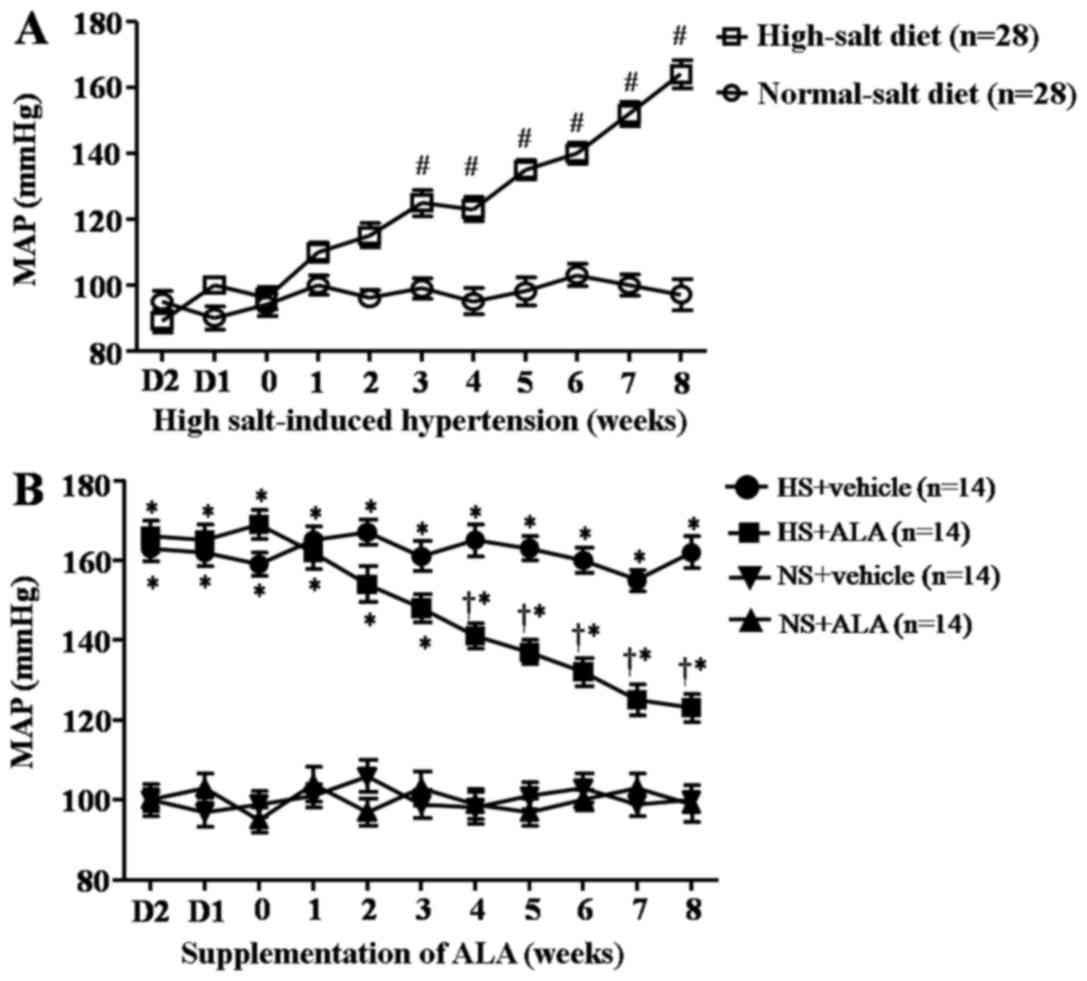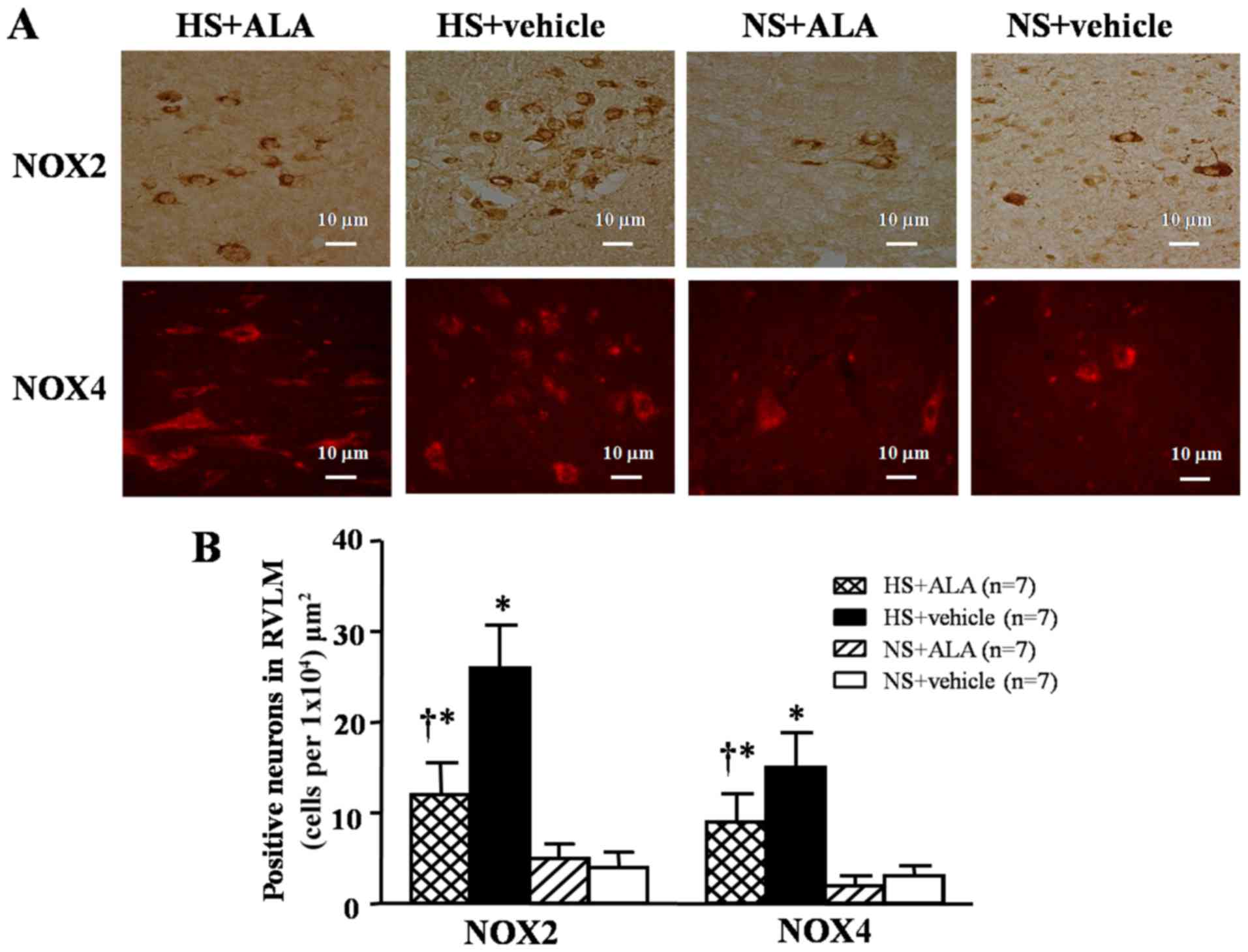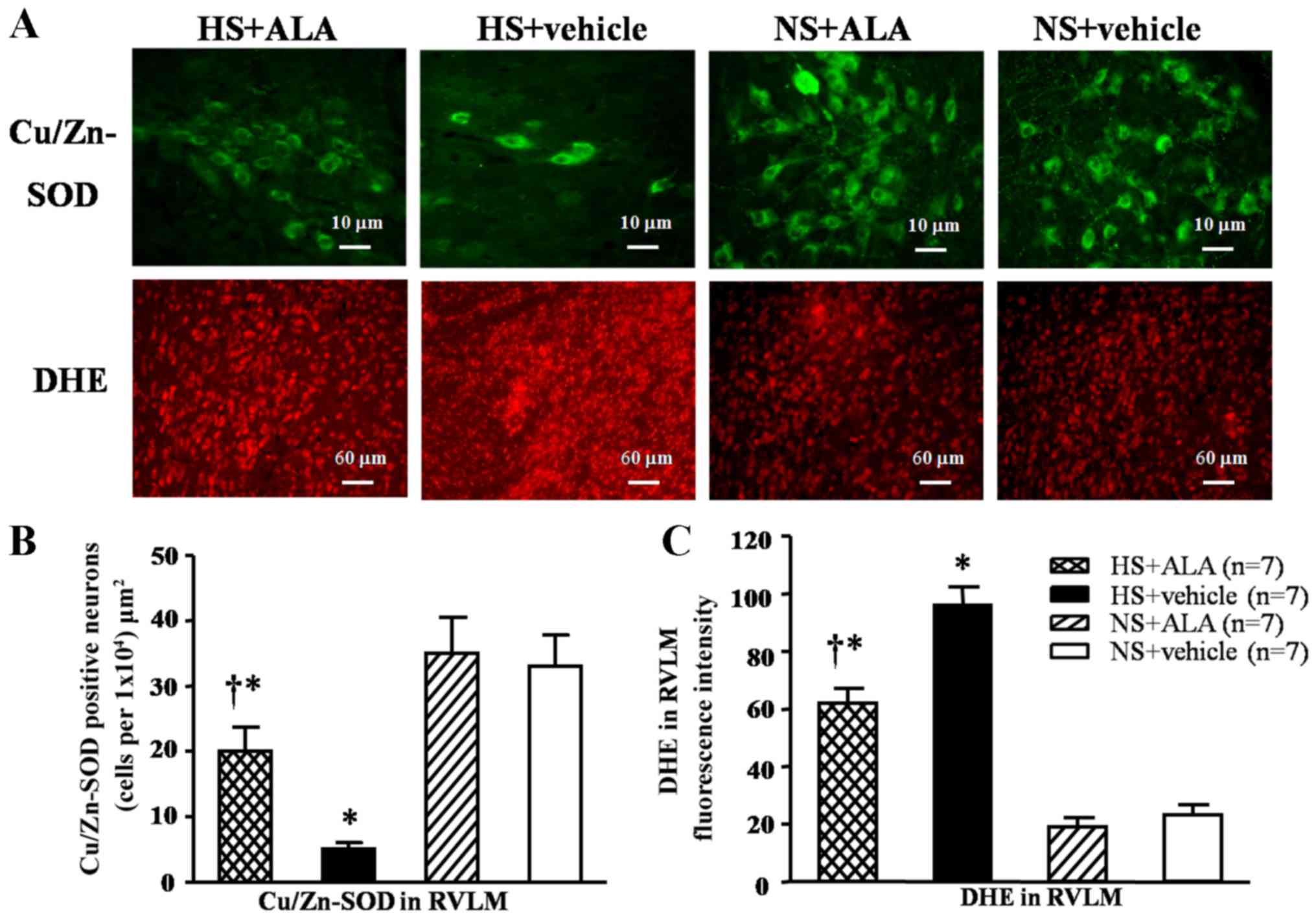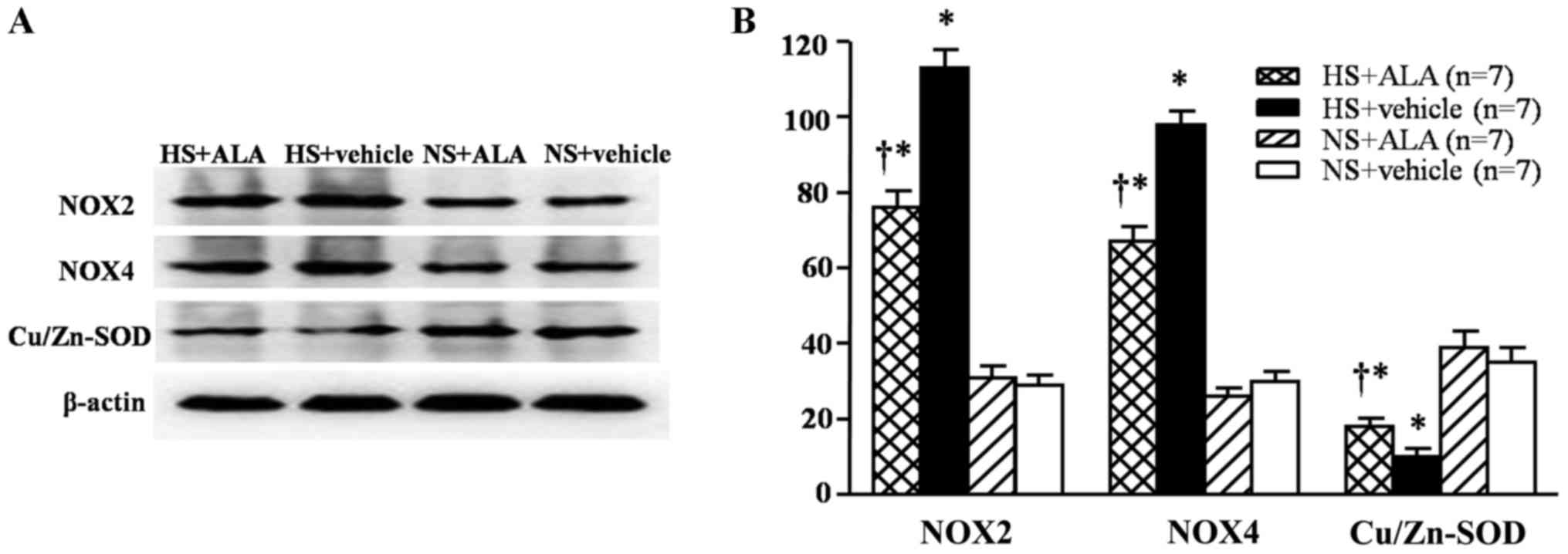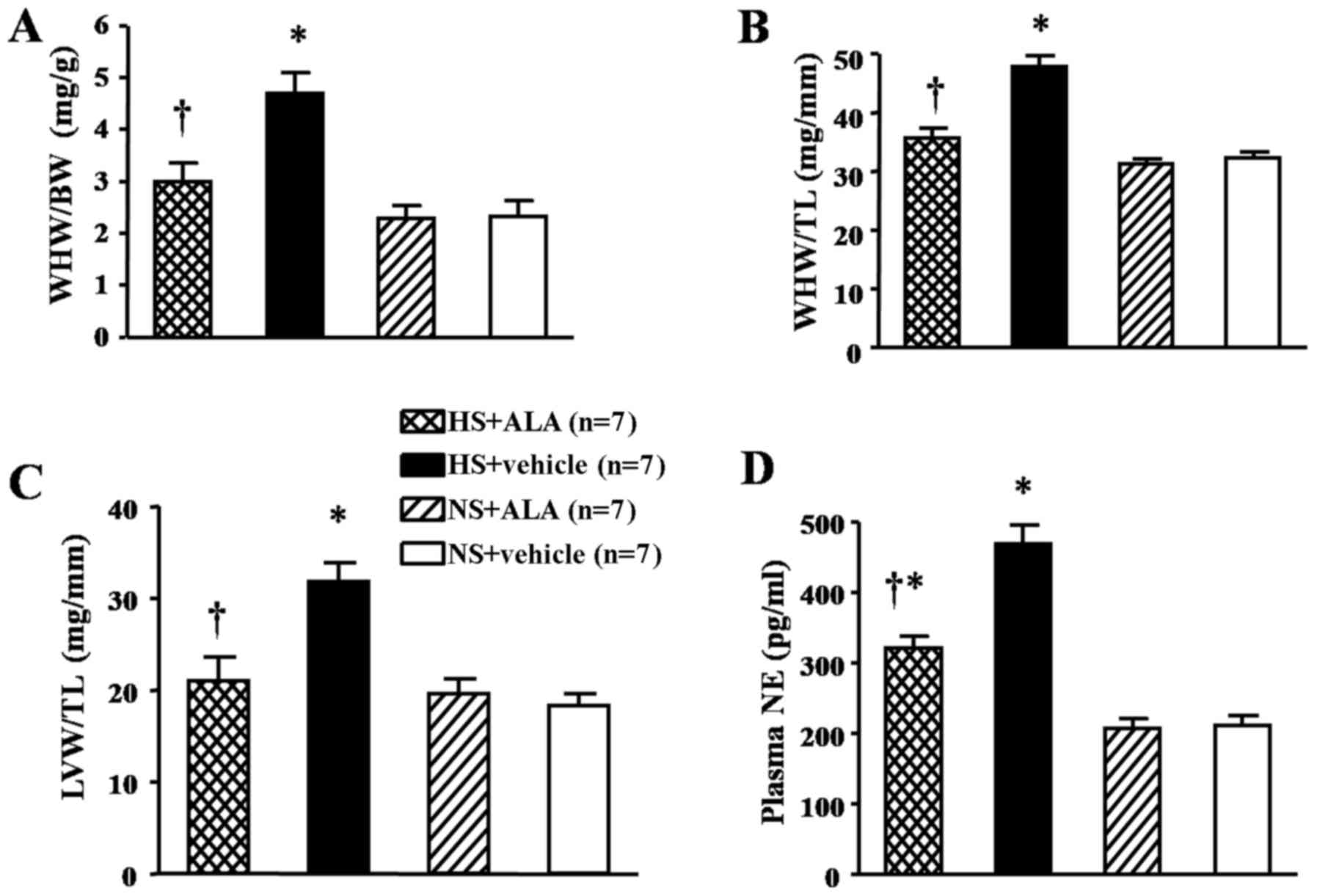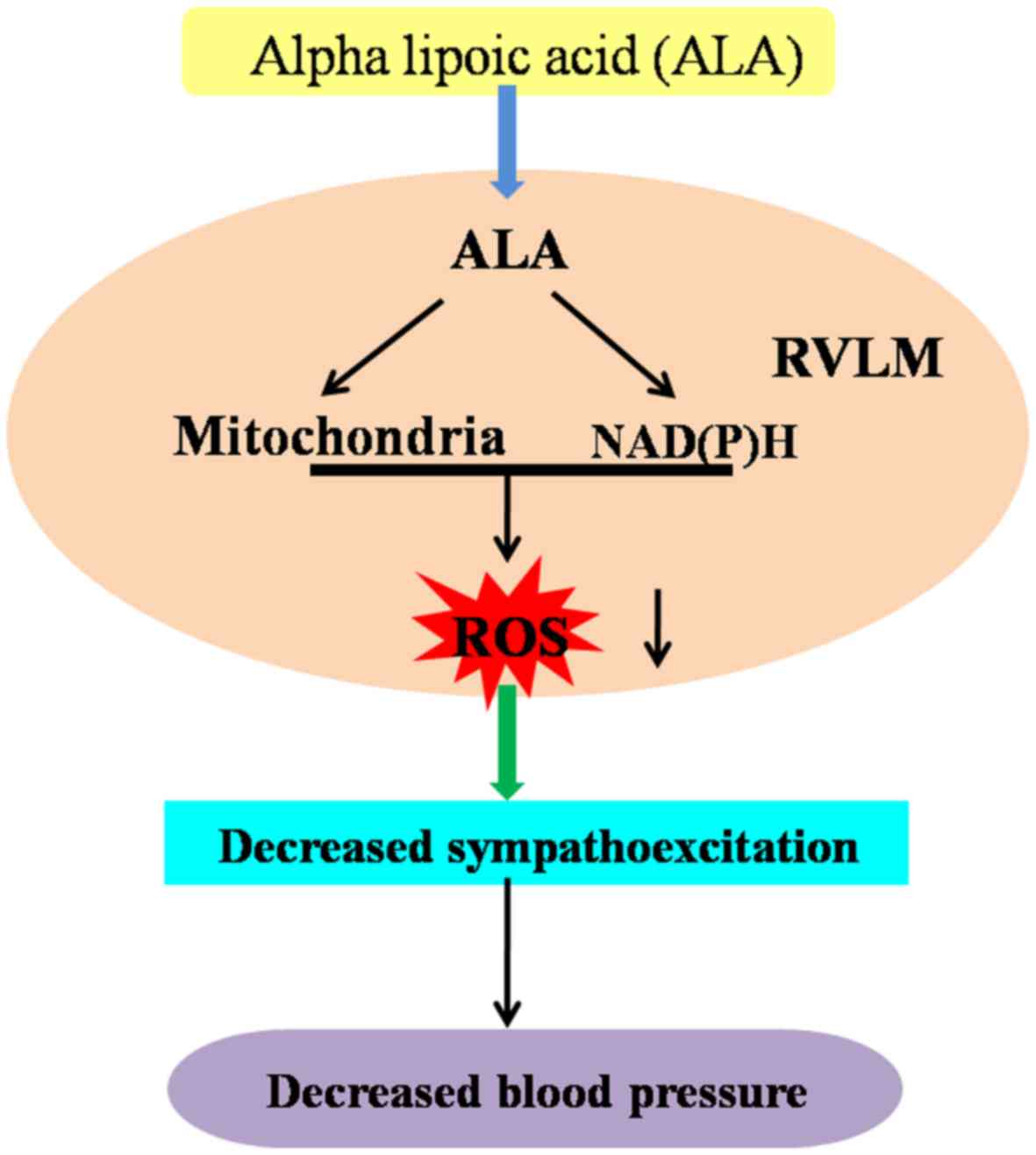|
1
|
Hall JE, Granger JP, do Carmo JM, da Silva
AA, Dubinion J, George E, Hamza S, Speed J and Hall ME:
Hypertension: Physiology and pathophysiology. Compr Physiol.
2:2393–2442. 2012.
|
|
2
|
Montezano AC, Dulak-Lis M, Tsiropoulou S,
Harvey A, Briones AM and Touyz RM: Oxidative stress and human
hypertension: Vascular mechanisms, biomarkers, and novel therapies.
Can J Cardiol. 31:631–641. 2015. View Article : Google Scholar : PubMed/NCBI
|
|
3
|
Virdis A, Bacca A, Colucci R, Duranti E,
Fornai M, Materazzi G, Ippolito C, Bernardini N, Blandizzi C,
Bernini G, et al: Endothelial dysfunction in small arteries of
essential hypertensive patients: Role of cyclooxygenase-2 in
oxidative stress generation. Hypertension. 62:337–344. 2013.
View Article : Google Scholar : PubMed/NCBI
|
|
4
|
Vanhoutte PM, Shimokawa H, Tang EH and
Feletou M: Endothelial dysfunction and vascular disease. Acta
Physiol (Oxf). 196:193–222. 2009. View Article : Google Scholar
|
|
5
|
Koga Y, Hirooka Y, Araki S, Nozoe M, Kishi
T and Sunagawa K: High salt intake enhances blood pressure increase
during development of hypertension via oxidative stress in rostral
ventrolateral medulla of spontaneously hypertensive rats. Hypertens
Res. 31:2075–2083. 2008. View Article : Google Scholar : PubMed/NCBI
|
|
6
|
Liu YZ, Chen JK, Li ZP, Zhao T, Ni M, Li
DJ, Jiang CL and Shen FM: High-salt diet enhances hippocampal
oxidative stress and cognitive impairment in mice. Neurobiol Learn
Mem. 114:10–15. 2014. View Article : Google Scholar : PubMed/NCBI
|
|
7
|
Higashi Y, Maruhashi T, Noma K and Kihara
Y: Oxidative stress and endothelial dysfunction: Clinical evidence
and therapeutic implications. Trends Cardiovasc Med. 24:165–169.
2014. View Article : Google Scholar : PubMed/NCBI
|
|
8
|
Andrades ME, Ritter C and Dal-Pizzol F:
The role of free radicals in sepsis development. Front Biosci
(Elite Ed). 1:277–287. 2009.
|
|
9
|
Barichello T, Fortunato JJ, Vitali AM,
Feier G, Reinke A, Moreira JC, Quevedo J and Dal-Pizzol F:
Oxidative variables in the rat brain after sepsis induced by cecal
ligation and perforation. Crit Care Med. 34:886–889. 2006.
View Article : Google Scholar : PubMed/NCBI
|
|
10
|
Zhang ZH, Wei SG, Francis J and Felder RB:
Cardiovascular and renal sympathetic activation by blood-borne
TNF-alpha in rat: The role of central prostaglandins. Am J Physiol
Regul Integr Comp Physiol. 284:R916–R927. 2003. View Article : Google Scholar : PubMed/NCBI
|
|
11
|
Kumagai H, Oshima N, Matsuura T, Iigaya K,
Imai M, Onimaru H, Sakata K, Osaka M, Onami T, Takimoto C, et al:
Importance of rostral ventrolateral medulla neurons in determining
efferent sympathetic nerve activity and blood pressure. Hypertens
Res. 35:132–141. 2012. View Article : Google Scholar :
|
|
12
|
Brooks VL, Haywood JR and Johnson AK:
Translation of salt retention to central activation of the
sympathetic nervous system in hypertension. Clin Exp Pharmacol
Physiol. 32:426–432. 2005. View Article : Google Scholar : PubMed/NCBI
|
|
13
|
Carlson SH, Roysomutti S, Peng N and Wyss
JM: The role of the central nervous system in NaCl-sensitive
hypertension in spontaneously hypertensive rats. Am J Hypertens.
14:155S–162S. 2001. View Article : Google Scholar : PubMed/NCBI
|
|
14
|
Smith AR, Shenvi SV, Widlansky M, Suh JH
and Hagen TM: Lipoic acid as a potential therapy for chronic
diseases associated with oxidative stress. Curr Med Chem.
11:1135–1146. 2004. View Article : Google Scholar : PubMed/NCBI
|
|
15
|
McNeilly AM, Davison GW, Murphy MH, Nadeem
N, Trinick T, Duly E, Novials A and McEneny J: Effect of α-lipoic
acid and exercise training on cardiovascular disease risk in
obesity with impaired glucose tolerance. Lipids Health Dis.
10:2172011. View Article : Google Scholar
|
|
16
|
Wollin SD and Jones PJ: Alpha-lipoic acid
and cardiovascular disease. J Nutr. 133:3327–3330. 2003.PubMed/NCBI
|
|
17
|
Petronilho F, Florentino D, Danielski LG,
Vieira LC, Martins M, Vieira A, Bonfante S, Goldim MP and Vuolo F:
Alpha-Lipoic Acid Attenuates Oxidative Damage in Organs After
Sepsis. Inflammation. 39:357–365. 2016. View Article : Google Scholar
|
|
18
|
Elks CM, Reed SD, Mariappan N,
Shukitt-Hale B, Joseph JA, Ingram DK and Francis J: A
blueberry-enriched diet attenuates nephropathy in a rat model of
hypertension via reduction in oxidative stress. PLoS One.
6:e240282011. View Article : Google Scholar : PubMed/NCBI
|
|
19
|
Gao L, Wang W, Li YL, Schultz HD, Liu D,
Cornish KG and Zucker IH: Superoxide mediates sympathoexcitation in
heart failure: roles of angiotensin II and NAD(P)H oxidase. Circ
Res. 95:937–944. 2004. View Article : Google Scholar : PubMed/NCBI
|
|
20
|
Su Q, Liu JJ, Cui W, Shi XL, Guo J, Li HB,
Huo CJ, Miao YW, Zhang M, Yang Q, et al: Alpha lipoic acid
supplementation attenuates reactive oxygen species in hypothalamic
paraventricular nucleus and sympathoexcitation in high salt-induced
hypertension. Toxicol Lett. 241:152–158. 2016. View Article : Google Scholar
|
|
21
|
Agarwal D, Welsch MA, Keller JN and
Francis J: Chronic exercise modulates RAS components and improves
balance between pro- and anti-inflammatory cytokines in the brain
of SHR. Basic Res Cardiol. 106:1069–1085. 2011. View Article : Google Scholar : PubMed/NCBI
|
|
22
|
Lakroun Z, Kebieche M, Lahouel A, Zama D,
Desor F and Soulimani R: Oxidative stress and brain mitochondria
swelling induced by endosulfan and protective role of quercetin in
rat. Environ. Sci Pollut Res Int. 22:7776–7781. 2015. View Article : Google Scholar
|
|
23
|
Begue JA and Aust SD: Microsomal lipid
peroxidation. Methods Enzymol. 52:302–310. 1978. View Article : Google Scholar
|
|
24
|
Kono Y: Generation of superoxide radical
during autoxidation of hydroxylamine and an assay for superoxide
dismutase. Arch Biochem Biophys. 186:189–195. 1978. View Article : Google Scholar : PubMed/NCBI
|
|
25
|
Sedlak J and Lindsay RH: Estimation of
total protein bound and nonprotein sulfhydryl groups in tissue with
Ellman's reagent. Anal Biochem. 25:192–205. 1968. View Article : Google Scholar : PubMed/NCBI
|
|
26
|
Guggilam A, Cardinale JP, Mariappan N,
Sriramula S, Haque M and Francis J: Central TNF inhibition results
in attenuated neurohumoral excitation in heart failure: A role for
superoxide and nitric oxide. Basic Res Cardiol. 106:273–286. 2011.
View Article : Google Scholar : PubMed/NCBI
|
|
27
|
Guggilam A, Haque M, Kerut EK, McIlwain E,
Lucchesi P, Seghal I and Francis J: TNF-alpha blockade decreases
oxidative stress in the paraventricular nucleus and attenuates
sympathoex-citation in heart failure rats. Am J Physiol Heart Circ
Physiol. 93:H599–H609. 2007. View Article : Google Scholar
|
|
28
|
Karppanen H and Mervaala E: Sodium intake
and hypertension. Prog Cardiovasc Dis. 49:59–75. 2006. View Article : Google Scholar : PubMed/NCBI
|
|
29
|
Frohlich ED: The salt conundrum: A
hypothesis. Hypertension. 50:161–166. 2007. View Article : Google Scholar : PubMed/NCBI
|
|
30
|
Huang BS, Van Vliet BN and Leenen FH:
Increases in CSF [Na+] precede the increases in blood
pressure in Dahl S rats and SHR on a high-salt diet. Am J Physiol
Heart Circ Physiol. 287:H1160–H1166. 2004. View Article : Google Scholar : PubMed/NCBI
|
|
31
|
Huang BS, Cheung WJ, Wang H, Tan J, White
RA and Leenen FH: Activation of brain renin-angiotensin-aldosterone
system by central sodium in Wistar rats. Am J Physiol Heart Circ
Physiol. 291:H1109–H1117. 2006. View Article : Google Scholar : PubMed/NCBI
|
|
32
|
Huang BS, Amin MS and Leenen FH: The
central role of the brain in salt-sensitive hypertension. Curr Opin
Cardiol. 21:295–304. 2006. View Article : Google Scholar : PubMed/NCBI
|
|
33
|
Wang H, Huang BS and Leenen FH: Brain
sodium channels and ouabainlike compounds mediate central
aldosterone-induced hypertension. Am J Physiol Heart Circ Physiol.
285:H2516–H2523. 2003. View Article : Google Scholar : PubMed/NCBI
|
|
34
|
Nozoe M, Hirooka Y, Koga Y, Araki S, Konno
S, Kishi T, Ide T and Sunagawa K: Mitochondria-derived reactive
oxygen species mediate sympathoexcitation induced by angiotensin II
in the rostral ventrolateral medulla. J Hypertens. 26:2176–2184.
2008. View Article : Google Scholar : PubMed/NCBI
|
|
35
|
Zimmerman MC and Davisson RL: Redox
signaling in central neural regulation of cardiovascular function.
Prog Biophys Mol Biol. 84:125–149. 2004. View Article : Google Scholar : PubMed/NCBI
|
|
36
|
Goraca A, Huk-Kolega H, Piechota A,
Kleniewska P, Ciejka E and Skibska B: Lipoic acid - biological
activity and therapeutic potential. Pharmacol Rep. 63:849–858.
2011. View Article : Google Scholar : PubMed/NCBI
|
|
37
|
Abdel-Zaher AO, Abdel-Hady RH, Mahmoud MM
and Farrag MM: The potential protective role of alpha-lipoic acid
against acetaminophen-induced hepatic and renal damage. Toxicology.
243:261–270. 2008. View Article : Google Scholar
|
|
38
|
Anto SK, Koyada N, Khan S and Jena G:
α-Lipoic acid attenuates transplacental nicotine-induced germ cell
and oxidative DNA damage in adult mice. J Basic Clin Physiol
Pharmacol. 27:585–593. 2016. View Article : Google Scholar : PubMed/NCBI
|















